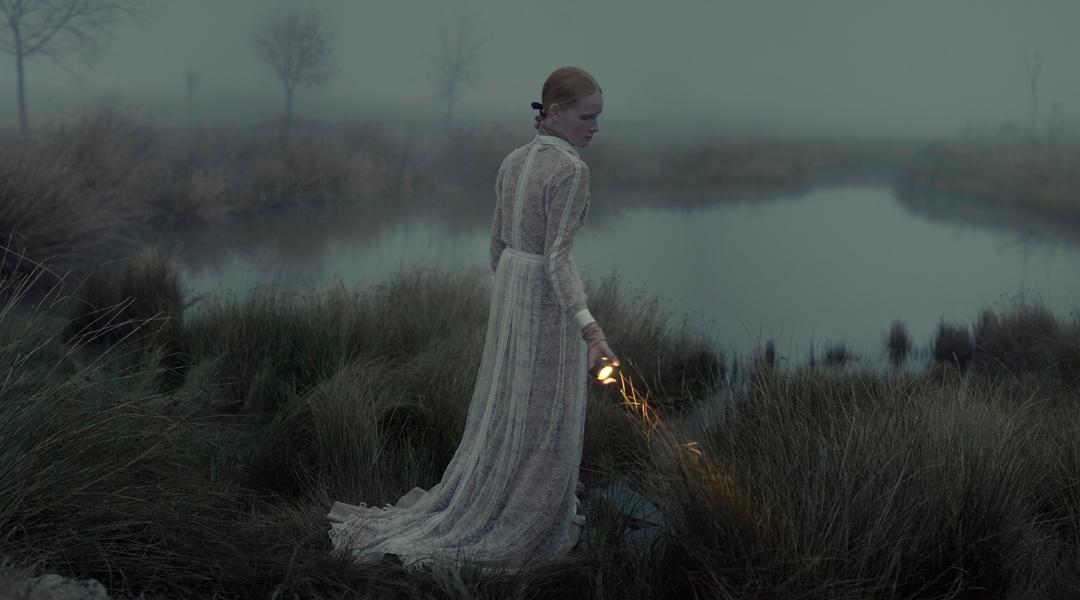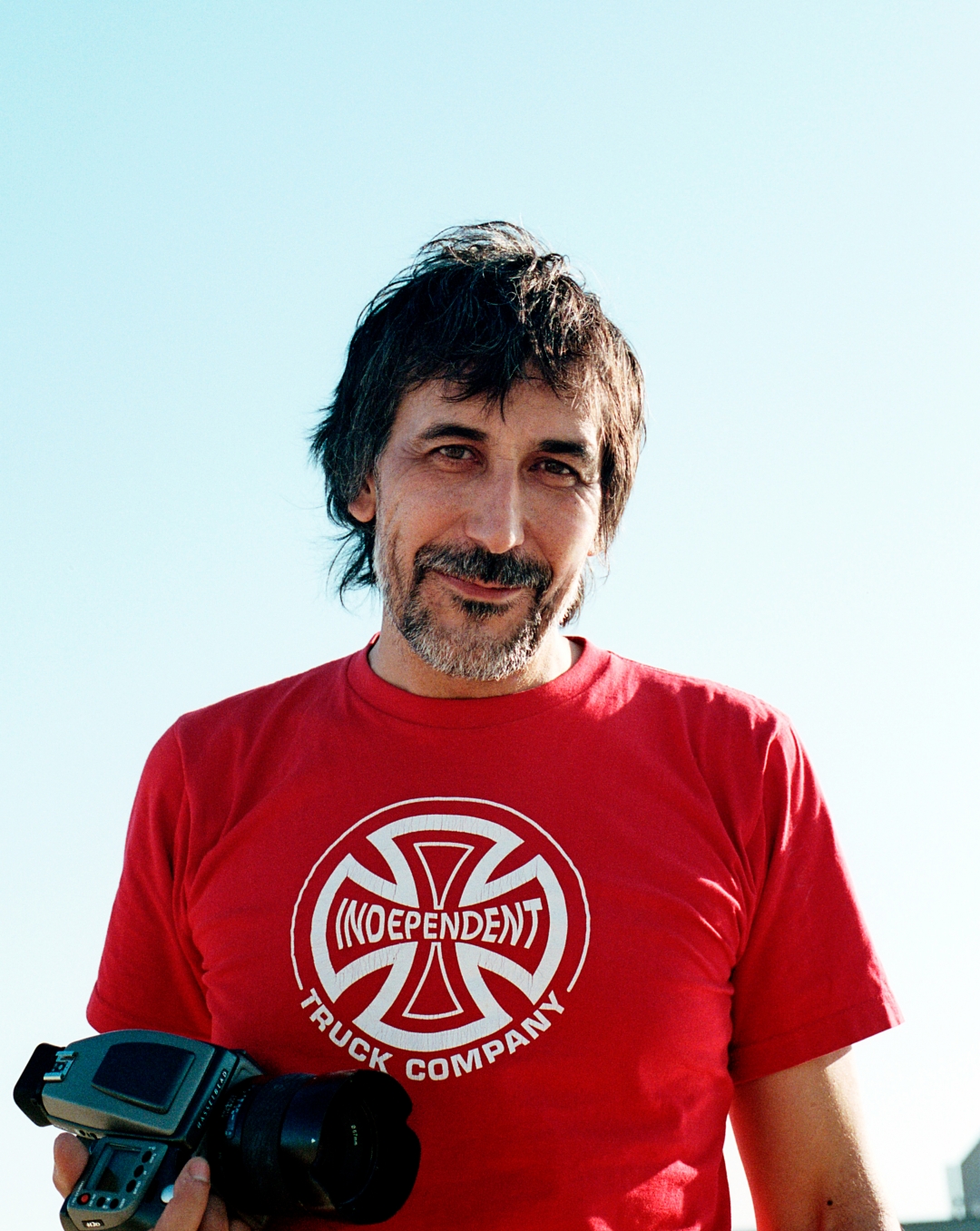Eugenio Recuenco
Shooting against the Current

Capturing reality with an almost painterly sensibility is part of Recuenco’s brilliance. Now, this photographer from Madrid explores his most personal universe from several angles. A compilation of one thousand and one photographs and a series are his proposal against the culture of immediacy, conformity and lack of freedom
Eugenio Recuenco (Madrid, 1968) has been a nonconformist since birth. It was May 1968, and it seems like the student protests against the system brought him out sooner. “Hearing all that racket, I was in a hurry to be born and see what was happening”. Almost six decades later, this rebellious seed re-emerged, this time due to a lack of freedom in a society that prioritises immediacy and, as he calls it, easy praise. It’s not a matter of just going against the current for the sake of it, but to do so out of love for your work”. This conviction was the driving force behind 365º, a project that concluded with 365 images collected over eight years.
Constantly seeking the quality of everything that comes through his lens is part of this photographer’s genius, whose work transcended borders a long time ago. Boucheron, Yves Saint Laurent, Loewe and several other leading fashion headliners have enjoyed his talent. Today, he confesses that he tries to work on personal and commercial projects equally: “For me, what is important is the concept, not only the shell, the wrapping”. This is precisely the concern that drives him to develop his creativity in all kinds of media. What’s next? A series of one thousand and one photographs and a TV series that he hopes to be working on 100% shortly.
After receiving more than 90,000 people at CEART in Fuenlabrada, 365º is now split between Berlin (Camera Work Gallery) and Shanghai (Uni Elite). Was it meant to become a travelling exhibition?
Initially it wasn’t even an exhibition. We started to compile a collection of photographs. You always feel like a personal series could become an exhibition or a book, but it wasn’t something deliberate. In fact, when we finished the project and thought about displaying it, we realised that we had 365 photos to illuminate. Technology has allowed us to do this with paper, iron, fabric and back-lit boxes. Thanks to this, the project is free to travel, since it only requires a space to house it. More than an exhibition, it’s an installation.
What has such a long-standing project taught you?
To get along with others, to try to bring the best out of each person and to respect their creative space. It’s a collaboration with peers and I have tried to give them all enough space to enjoy themselves. Likewise, I have gained patience, because in eight years there are times when it feels like you aren’t moving forward. Nevertheless, having time is a gift for these kinds of projects.
You’ve spent almost a decade analysing society and culture, have you perceived real change in these areas?
Yes, I sense that they’re evolving. New technologies have emerged, including taking photos with your phone. There are things in life, in society and in our culture or in the first world that have become extremely relevant. But beyond all of this, they’re just new pathways that invite us to say what we think.
I guess that such a long project must be full of anecdotes. Do you want to share any that are particularly relevant?
In one of the photographs of 365º there is a mountain of clothes that symbolises consumerism. At the time I didn’t know Pistoletto’s Venus of the Rags, but during the opening someone asked me if it had inspired me, because it is practically a representation of it. This is what happens when there is so much material. There’s always someone somewhere else who is thinking the same thing.
You have started another project that will even surpass this one, One Thousand and One Nights. Do long-term challenges motivate you?
Really, it will be revealed gradually, because I’ll be sharing a part each year. I think of it as a great museum of a single author. One thousand and one photographs in different rooms, all with a very pictorial motive. When we finish, it will be even harder to exhibit than 365º, because it will require a space six times larger.
You mentioned the concept will be pictorial but, will the narrative be linked to the present?
We want to continue to tell the story of the world we live in; how absurd and wonderful it is and all of its problems. The first phase corresponds to a night-time shoot, the most difficult. We’ve been pursuing this photo for eight months and I hope that we’ll be able to shoot it in November, because we need the moon to be in a certain place. But there will be other phases that will talk about women and their fight, others about sex, pornography and how this topic is dealt with in the world. There will also be references to the environment.
Eight months pursuing a photo is not something that many can afford. In fact, the trend in almost all areas is the opposite. Have you experienced this first-hand?
Not personally, no. 365º was a statement of intent against where society is taking us, its swiftness, the lack of effort... I have noticed this in commercial work. I think this is the most sterile recession I have seen. When it began, I thought they’d take away our resources and we’d have to become inventive, but it’s been to no avail. They’ve taken away our resources but also our freedom. It’s very disheartening because we can do better. We’ve shrunk in all aspects.
As well as these projects, you are immersed in a TV series. What draws you to this format?
I never stay still. I still have a lot to learn, but I’m very restless. They say I’m a photographer because I use photography in 80 per cent of my work, but what I like the most is suggesting things to the audience and creating images.
So, it’s too early to know when and where we’ll be able to see it...
Where still at the sales stage. It’s quite a bold series, very international. They’ve tried to convince us to make it more Spanish, but I like to tell stories that can be read universally. Now we’re going to shoot a teaser to see what we’re capable of and how we can manage such a large project. I hope that next year we’ll be working on it 100%.
You’re also working on a feature film, (W)Hole Time. What stage is it at?
Cinema is more complicated. (W)Hole Time is slightly dormant, gradually improving. I went to Los Angeles with my team, we saw a female actor I was interested in, and we made a commitment with her and her agents. We were also offered Gary Oldman, but in the end the budget didn’t stretch that far. It’s hard for someone to commit to a film that won’t become an instant commercial success.
Do you feel equally comfortable behind both cameras?
When the goal is to tell your story, I don’t notice much of a difference. I would say that video is more expressive because you get to play with time, sound... There are many elements that can make the story more concrete and I like that. Also, thanks to my enthusiasm, nothing feels too difficult.

Eugenio Recuenco, photographer of dreams and nightmares. © Courtesy of the artist









